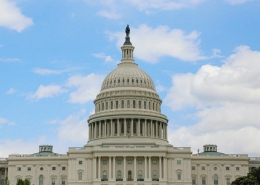The United States has a notoriously high traffic death rate per capita among the OECD countries. Fatalities have trended upward more recently between 2019 and 2021, likely due to the pandemic creating conditions for high traffic speeds and increased crash severity. The good news is that there is a slew of proven measures that can help reverse the trend if state and local governments create intentional policies to limit speeds and protect vulnerable road users.
The United States, in the past decade, has made massive strides in improving its transportation system. New emission regulations set by the EPA made vehicles cleaner, continuing the progress made in air quality improvements in the prior decades. More recently, the Infrastructure Investment and Jobs Act (IIJA) authorized $567 billion for building and maintaining transportation infrastructure until 2026. The Inflation Reduction Act (IRA) created pathways to transition to a zero-emission future. These policies testify to the United States’ ambitious and forward-looking vision to reform its transportation system to meet future needs.
One area where it has failed to make similar advancements is road safety. Road traffic deaths in the US have increased, on average, at the rate of 3 percent annually between 2011 and 2021, reversing the progress made between the 1970s and 2o10 (when there was a near 40 percent decrease).
Reviewing crash data gives some insight into what has led to the overall stagnation and the recent spike in road traffic fatalities. There are three patterns that are clear. First, urban areas are experiencing increased road traffic fatalities. Second, risks to pedestrians, motorcyclists, and cyclists have risen disproportionately over the past decade. Third, speeding continues to be a huge risk factor both in urban and rural areas.
Urban areas are experiencing increased road traffic fatalities.
Fatalities in urban areas have increased by a far greater degree than in rural areas. Between 2012 and 2021, fatalities increased by two-thirds in urban areas, even as the vehicle miles traveled in these areas increased only by 8 percent. Contrastingly, in rural areas, fatalities decreased by 7 percent as the vehicle miles traveled increased by 2 percent. The increase in fatalities in urban areas can’t fully be attributed to increases in vehicle miles traveled. Traveling in urban areas is becoming riskier. This is especially true for pedestrians, cyclists, and motorcyclists, who together comprised 44 percent of fatalities in urban areas in 2021.
Risks to vulnerable road users have risen disproportionately.
Pedestrians, cyclists, and motorcyclists are considered vulnerable road users as they are more prone to traffic deaths than vehicle occupants given their lack of protection. Deaths involving vulnerable road users have increased steadily in the last few years with 202o and 2021 seeing a more rapid increase. Between 2010 and 2020, while fatalities increased by 17 percent, pedestrian and cyclist fatalities increased by nearly 44 percent. This is especially true in urban areas, where pedestrian and cyclist deaths have nearly doubled, and motorcyclist deaths have increased by over 50 percent in the last decade. Motorcyclist riders are also found to exhibit more violative or risky behavior compared to other road users. In 2021, of the motorcyclists involved in fatal crashes, 36 percent were riding without a valid license at the time of a crash and 22 percent had previous speeding convictions. Such behavior was considerably lower in other road user groups involved in fatal crashes.
Speeding continues to be a major risk factor.
The risk of fatality increases exponentially with vehicle speed. Speed-related risks haven’t changed much in the United States since 2010, with nearly 30 percent of total road fatalities every year happening because of a speeding vehicle. While risks associated with speeding are not considerably different between urban and rural areas, urban areas experienced a spike in fatalities related to speeding during the pandemic years. In 2021, more than 50 percent of all speed-related deaths happened on non-interstate urban roads. Pedestrians are especially at a heightened risk of speeding-related injuries in urban areas. More than 75 percent of pedestrian fatalities happen on roads with speed limits higher than 30 mph.
These three patterns are not standalone. They show how road traffic risks can interact, producing a compounding effect and making streets disproportionately unsafe for certain user groups. Speed-related risks impacting vulnerable road users in urban areas must be prioritized first to make a real dent in reducing road traffic fatalities.

Other countries have made strides in reducing fatalities.
These challenges are not unique to the United States. Many other developing and highly urbanized economies have had to tackle similar increases in traffic fatalities in urban areas during the 1970s, and they have been more successful in doing so.
Between 1990 and 2017, Spain reduced road traffic fatalities by 80 percent, Sweden by 67 percent, and the Netherlands by 55 percent. All of them have focused on reducing speeds and prioritizing the safety of vulnerable road users by redesigning and reengineering their roads. Spain and the Netherlands, for example, improved speed enforcement by installing cameras on streets with frequent speed violations. The Netherlands has built extensive bike and pedestrian networks in urban areas to protect its vulnerable road users and adopted traffic calming measures (such as raised crossings, road diets, etc.). France has also invested in speed camera enforcement and pedestrianizing streets in its cities. Central to their approach is reimagining streets as people-centric places rather than conduits for cars.
United States’ policy approach still has gaps.
The United States has been making slow but much-needed progress toward some of these strategies already now widely adopted in other countries. The U.S. Department of Transportation released the National Roadway Safety Strategy in 2022 as a comprehensive approach to reduce road traffic fatalities, focusing on a multi-pronged safe system approach involving safe road user behavior, safe vehicles, safe speeds, safe roads, and post-crash care. This national policy also creates pathways for introducing vehicle technologies for speed limiting and automatic emergency braking to better protect pedestrians. European countries are already ahead of the United States in mandating such life-saving measures on their vehicles.
IIJA has also authorized funding for improving road safety. The Safe Streets and Roads for All (SS4A) program makes $5 billion available to local governments through 2026 for road safety planning and implementation, especially focused on vulnerable road users. This program could be transformative as it offers local governments direct access to funding rather than routing it via states.
The biggest pool of funding, however, is available to states via one of the core formula programs, Highway Safety Improvement Plan (HSIP), which provides $16 billion through 2026. States have considerable leeway in using the HSIP funding toward a wide range of safety improvements. In 2021, states invested $3.3 billion in safety improvements, and most of the funding was used for roadway safety improvements impacting motorists. A mere 9 percent was used for projects focusing on pedestrians and bicyclists and 0.4 percent on speed management.
State and local governments have a huge role to play.
While federal policy for reducing road traffic crashes in the United States is directionally right, its success ultimately depends on if and to what extent state and local governments coopt proven measures to reduce road traffic fatalities. Many state transportation departments continue to prioritize new highway construction over safety even with rising road traffic fatalities. For many states, the go-to strategy remains road safety education programs without any real road engineering changes, which are known to be more effective in reducing crashes. Another big challenge is how speed limits are set in the United States. Many jurisdictions still use the outdated 85th percentile method to determine speed limits, preventing local governments from setting their own speed limits. The Federal Highway Administration (FHWA) is currently working on a final rule that would advise traffic engineers on how to determine speed limits using a more comprehensive strategy.
Making transformative shifts in reducing road traffic deaths in the United States will require state and local governments to step up and create policies that dismantle a car-centric imagination of streets. The federal government must also take steps within its authority to hold states and local governments, which receive federal aid, accountable for reversing the rising road fatality trend and improve safety outcomes.
In the next part of this series will review examples of state and local governments in the United States that have achieved reduction in road traffic fatalities and the strategies that they have used to do so.














